According to Bright Side, here are the things you need to know about the causes of abdominal pain in different areas:
1. Pain in the lower chest or upper abdomen: Heartburn
Heartburn (acid reflux) causes a burning sensation in the lower chest and upper abdominal area. Additionally, you may feel a burning sensation in the throat and sometimes have a strange sour taste.
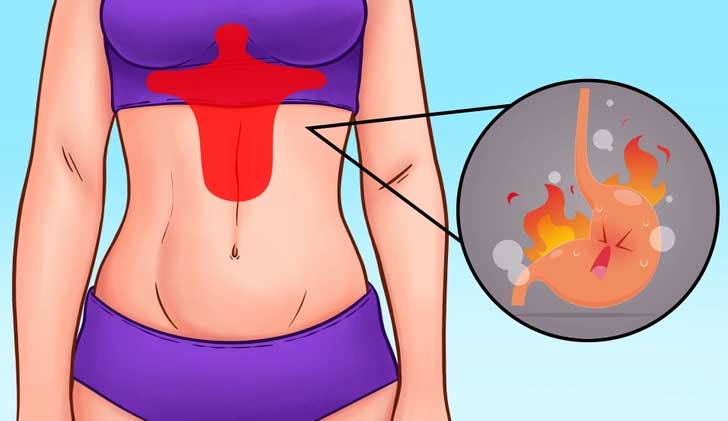
Cause: Consuming spicy foods, greasy foods, raw onions, chocolate, citrus fruits, coffee, and caffeinated beverages.
Solution: Avoid overeating. You should eat 5 to 6 small meals throughout the day instead of 2 to 3 large meals. Additionally, you should wear loose clothing to avoid pressure on the abdomen and quit smoking.
2. Cramping and diarrhea: Gastritis
If you experience cramping pain and watery diarrhea (usually without blood), nausea, vomiting, occasional muscle pain or headaches, it may indicate gastritis.
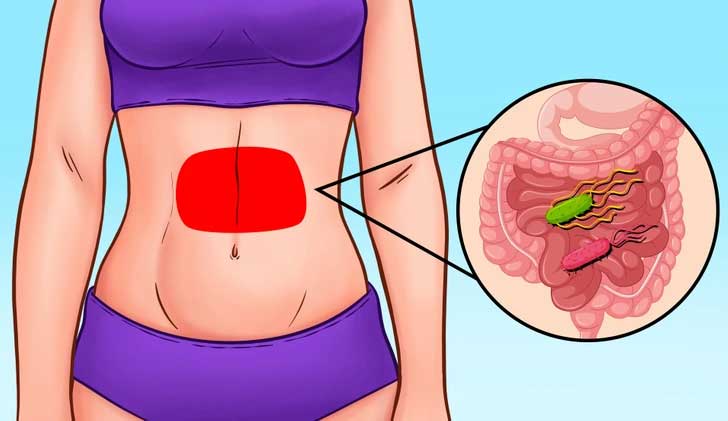
Cause: You may get infected with gastritis if you consume contaminated food or water, or share utensils, towels, and personal items with an infected person.
Solution: You should get vaccinated against the disease, wash your hands before eating, ensure everyone in the house uses their own personal belongings, and disinfect hard surfaces.
3. Severe upper abdominal pain: Peptic ulcer
Peptic ulcer can be the cause of cramping pain in the upper abdomen and the stomach area. Ulcers occur when the lining of your stomach is damaged or due to strong pain medications. Other symptoms of ulcers include changes in appetite, nausea, bloody or dark-colored stool, unexplained weight loss, vomiting, and chest pain.
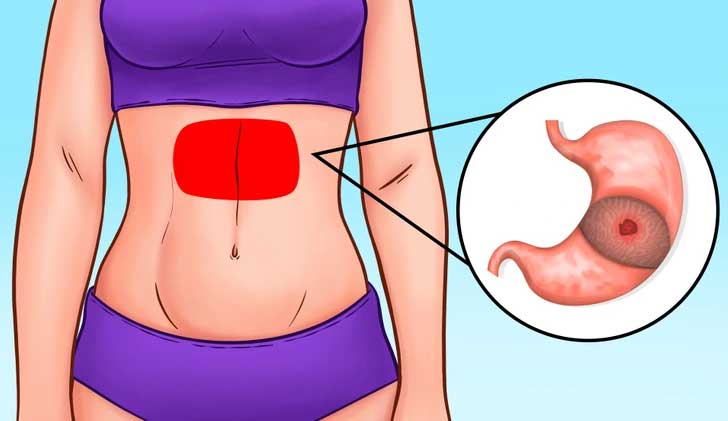
Cause: Regular use of aspirin, ibuprofen, or other anti-inflammatory drugs can negatively affect the stomach and cause ulcers.
Solution: To prevent ulcers, you should also limit the use of painkillers and wash your hands before eating. A healthy diet is also crucial. You should include whole grains, mixed with fruits or vegetables, and quit smoking.
4. Gassy and crampy: Excess gas in the abdomen
If you feel gassy and crampy in the upper part of your stomach or abdomen and feel bloated, you may be experiencing excess gas in your body. You may also experience other symptoms such as intermittent pain and making your stomach swell or feel like something is moving in your stomach and have belching or flatulence.
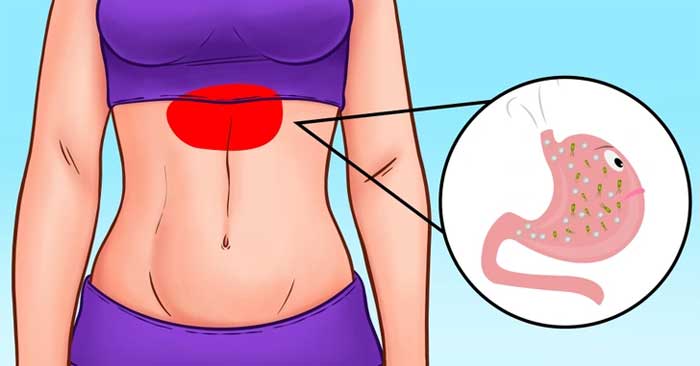
Cause: Eating quickly and swallowing air can cause this sensation. Carbonated drinks, beer, dairy products, and beans can accumulate a lot of gas in the stomach.
Solution: You should consume less of the listed foods. You can quickly resolve the issue by using peppermint lozenges.
5. Cramping and bloating: Irritable bowel syndrome (IBS)
If you have a sensitive digestive system, you may feel cramping and bloating in the abdominal area, which may result in irritable bowel syndrome (IBS). In this case, 2 outcomes can occur. Your digestive system can start to function very quickly, leading to diarrhea, or everything can slow down and cause constipation.
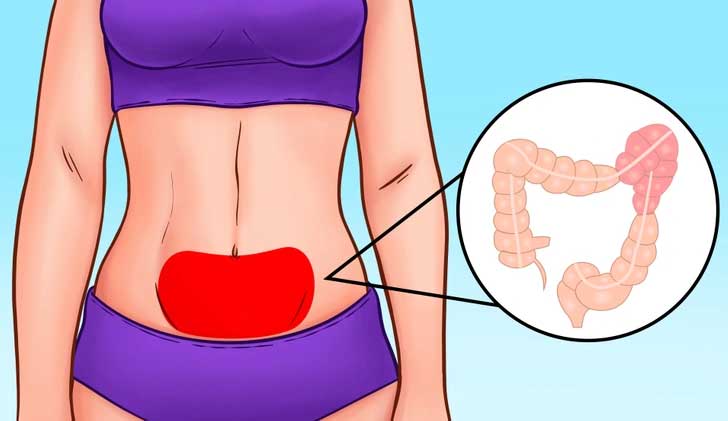
Cause: The cause of IBS is still unknown, but it is believed to occur due to a certain combination of abnormal movements of the digestive tract. The disruption in communication between the brain and the digestive tract is also one of the factors causing this problem.
Solution: In this case, you should review the food you have consumed. See which foods your body is sensitive to and reduce their intake.
6. Mild pain and difficulty digesting: Lactose intolerance
Stomach pain and bloating are common symptoms that indicate lactose intolerance. This can lead to diarrhea, bloating, or constipation. Other symptoms may include headaches, fatigue, difficulty concentrating, muscle and joint pain, mouth ulcers, and difficulty urinating.
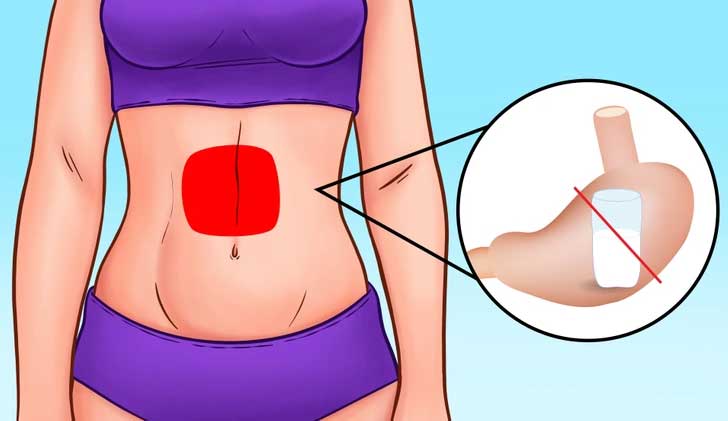
Cause: Typically, lactose intolerance is due to a deficiency of the lactase enzyme in the intestines. It breaks lactose into smaller sugars (glucose and galactose) and allows lactose to be absorbed from the intestines.
Solution: You should follow a lactose-free diet. However, to ensure you do not miss out on calcium and other beneficial substances from milk, try consuming more products such as broccoli, kale, tuna, salmon, and calcium-fortified products like soy milk.
Exploring the Use of Birth Control Pills for Acne Treatment
Are you curious about the advantages and disadvantages of taking daily birth control pills? Do women who take them experience better looking and feeling skin during their periods? DienmayXANH.com is here to discuss all of these questions and list all of the potential pros and cons of using birth control pills!
How to Reduce Acid Levels in the Stomach
People of all ages can experience issues with acid in the stomach that can cause symptoms such as heartburn, stomach pain, and bad breath.




































